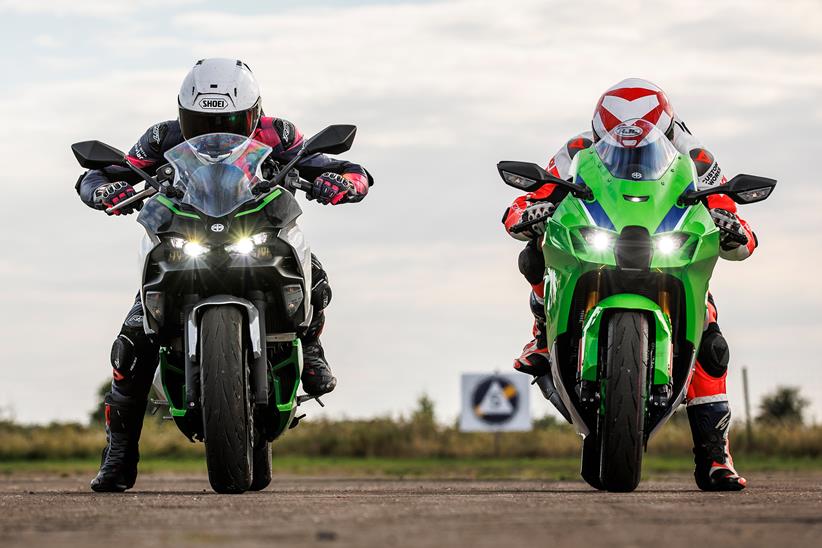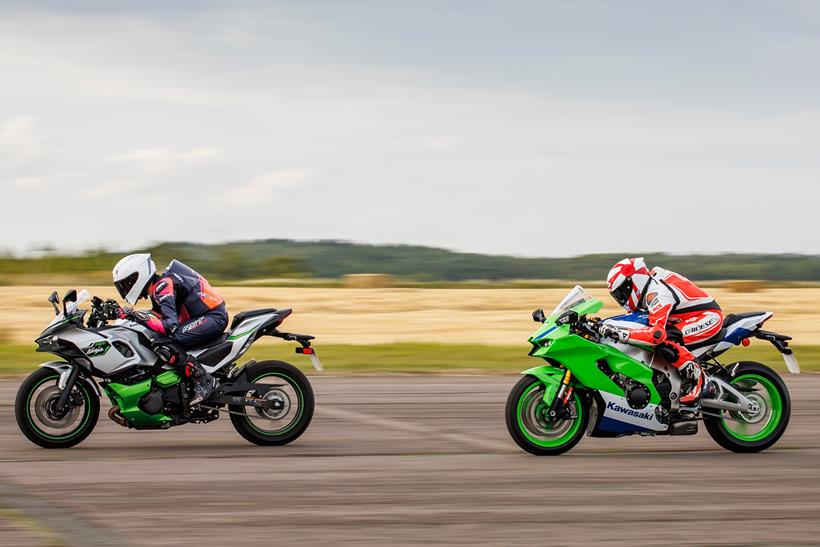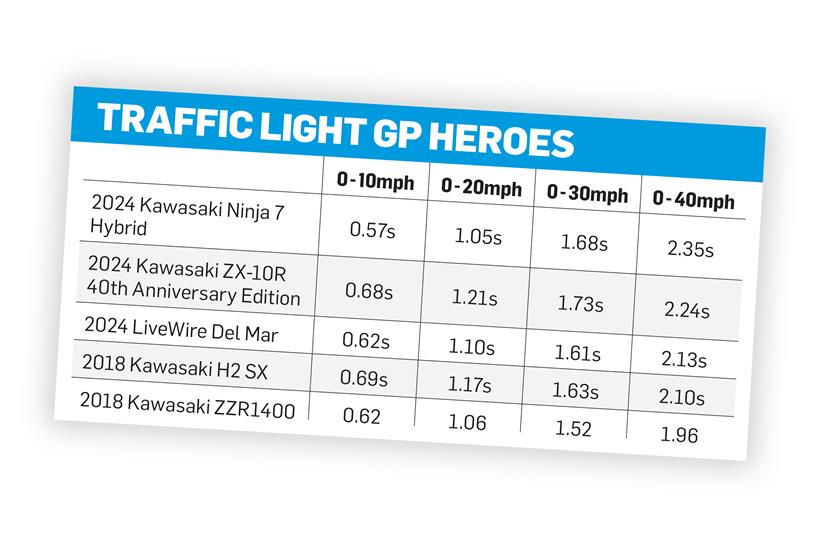Marketing fact check: Is a Kawasaki Ninja 7 Hybrid really faster off the line than a ZX-10R?

Kawasaki make some bold claims for their Ninja 7 Hybrid and Z7 Hybrid twins. The firm reckon that the ‘strong hybrid’ system in these 650-sized bikes offers “the instant acceleration of a 1000cc-class supersport model from a standing start with e-boost, and fuel economy on par with the 250cc-class”.
Read more
- Update one: First impressions
- Update two: The Hybrid is the ugly duckling of the Ninja family
- Update three: How far does a Ninja 7 Hybrid really go on a tank
- Update five: Recall notice halts the test
- Update six: Final thoughts and round-up
That’s a pretty eye-opening pair of statements relating to a single bike, so we thought it only fair we put them to the test in a true game of two halves.
There was only one way to do this properly: a speed test. Since it was Kawasaki making the claim, it stood to reason that we’d use the firm’s 1000cc sportsbike, so we arrived at Deenethorpe Airfield with a ZX-10R, resplendent in the latest retro 40th anniversary livery.

For the fuel economy testing, I hit the open road myself armed with a jerry can and a lot of patience…
Hitting the strip
MCN’s resident speed tester Bruce Dunn was charged with the job of comparing the bikes. He datalogged everything and rode both bikes in exactly the same conditions to ensure consistency between the results, running each bike multiple times to eradicate any chance of anomalous readings.
But first, we asked him what he expected the result to be. “Well, I first thought Kawasaki were making a bold claim about the Hybrid being faster off the line than the ZX-10R,” said Bruce. “However, when I applied some logic to it, I thought maybe the 1000cc ZX-10R might lose out on the initial launch, simply because it’s the only area of the acceleration and speed range where the lower-powered Hybrid can make a difference.”

The result
The hybrid was indeed faster outright up to 30mph, its electric assistance allowing it to dash off the line ahead of a ZX-10R that was struggling to get its power down without its nose heading for the sky. But it wasn’t the Hybrid’s speed that struck Bruce, it was its balance.
“What surprised me most was the big difference that the 9kW electric motor makes,” he said. “It adds just enough power without disrupting traction and without lifting the front wheel. The Hybrid is faster to 30mph and the ZX-10R only catches it up at around 35mph where the times and distances start to converge.”
Naturally, at that point the superbike then leaves the Hybrid in its exhaust. Bruce also provided some data on other relevant bikes; the Ninja 500 shares its 451cc engine with the HEV and despite being a considerable 55kg lighter, is slower at all points between zero and max speed. This gap would of course be less on a twisty road or track thanks to the smaller bike’s additional agility.

But more startlingly, the Hybrid is faster to 20mph than the quickest electric bike MCN have ever tested – the LiveWire S2 Del Mar – and ditto Kawasaki’s beastly supercharged H2 SX and their ZZR1400. All three monsters redress the balance after 30mph, but before that, as a bike on which to win the traffic light GP, the HEV is up there with the best.




